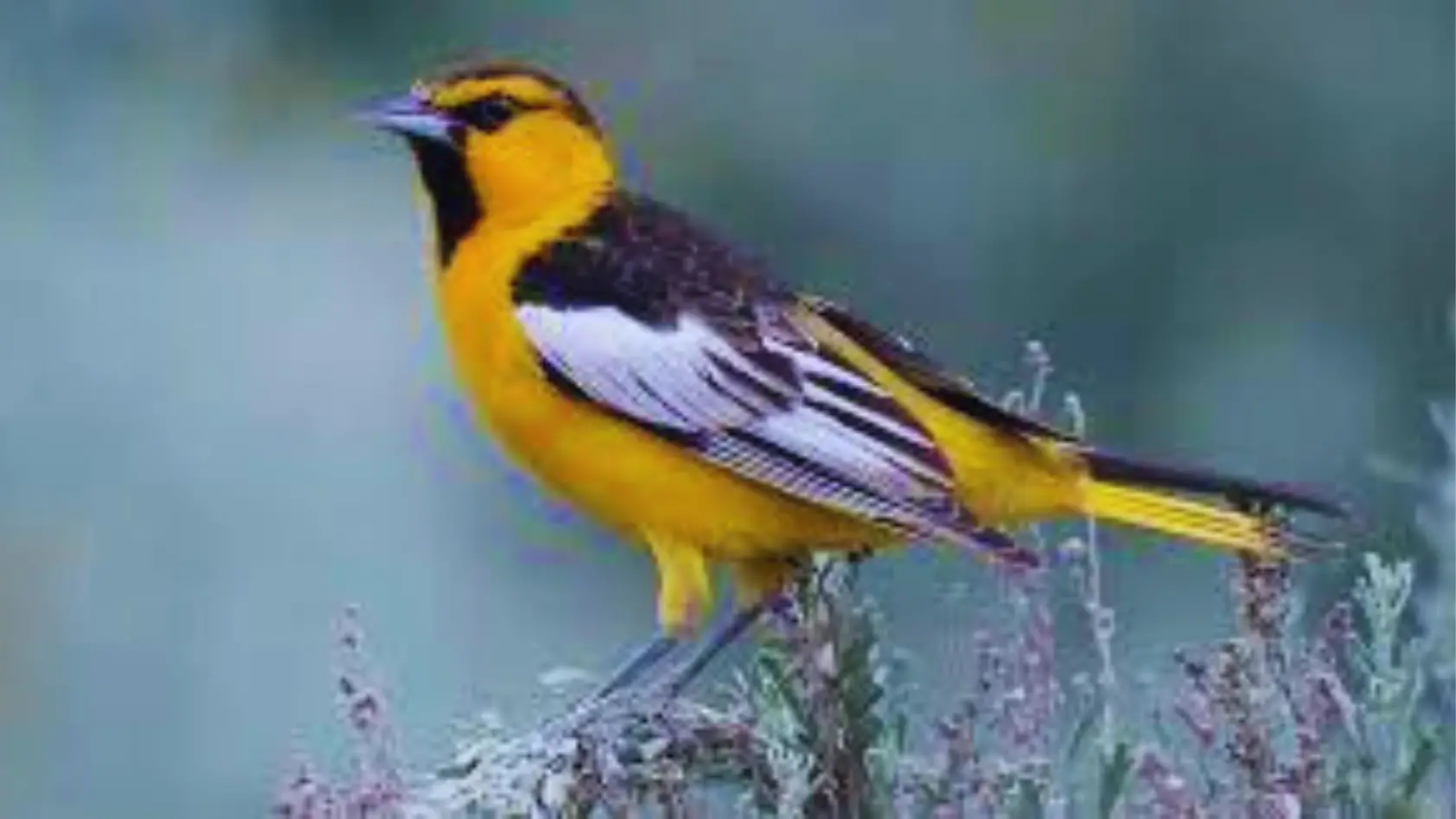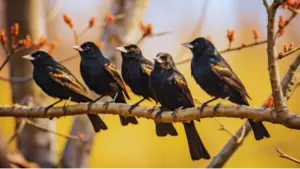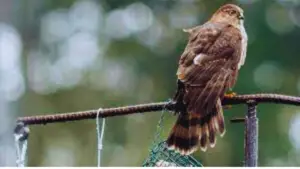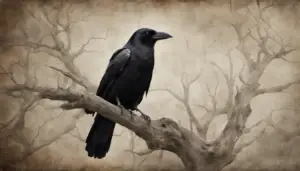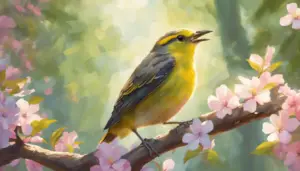Do you know that the sounds of an oriole are not only vibrant and beautiful, but they are also incredible songbirds? In fact, they have a melodic repertoire that will leave you in awe. With their enchanting songs, orioles bring a symphony of nature to life.
And did you know that these captivating tunes play a crucial role in avian music? It’s true! Orioles are an essential part of the musical tapestry of the bird world.
In this article, we will delve into the science behind oriole songs, exploring their patterns and dialects. We will also discuss the importance of conserving their habitats to ensure the continuation of their melodious serenades.
But it doesn’t stop there. We will also guide you on how to appreciate oriole songs in the wild and share captivating recordings that will transport you to their melodious world.
So get ready to revel in the serenade of these vibrant songbirds and let their sounds fill your heart with joy.
Key Takeaways
- Orioles have a diverse repertoire of songs and are known for their ability to mimic other bird songs.
- Oriole songs have variations in melody and pitch, including trills, whistles, and warbles.
- Oriole songs have cultural and symbolic significance, bringing good luck, joy, and prosperity in many cultures.
- Orioles use their songs to captivate potential partners, establish and strengthen pair bonds, and mark their territories.
Introduction to Orioles and their Songbird Status
Listen closely to the mellifluous melodies of orioles, as these enchanting songbirds are truly a testament to nature’s symphony. Orioles, known for their vibrant plumage and melodious songs, hold a special place in the avian world. With their distinctive calls and complex vocalizations, orioles have earned the status of being one of the most accomplished songbirds.
These beautiful creatures are known for their ability to mimic other bird songs, making their repertoire vast and diverse. From the rich, flute-like notes of the Baltimore oriole to the liquid, warbling songs of the orchard oriole, their songs are sure to captivate any listener. The male orioles are particularly vocal during the breeding season, using their songs to attract mates and defend their territories.
Orioles are also known for their ability to sing in duets, with both males and females contributing their unique harmonies. The result is a beautiful symphony of sounds that adds a touch of magic to any outdoor setting. Whether you’re enjoying a picnic in the park or simply relaxing in your backyard, the songs of orioles will transport you to a world of tranquility and beauty.
So, next time you find yourself surrounded by the sounds of nature, take a moment to revel in the serenade of these vibrant songbirds. Allow their melodies to wash over you, filling your heart with joy and reminding you of the wonders of the natural world.
The Melodic Repertoire of Orioles
In this subtopic, we will explore the melodic repertoire of orioles. You’ll discover the fascinating variations in melody and pitch that these songbirds possess, creating a symphony of sounds that is a delight to the ears.
Additionally, you’ll learn about the unique vocalizations and calls that orioles use to communicate with each other, adding another layer of complexity to their enchanting songs.
Variations in Melody and Pitch
Experience the mesmerizing symphony of the oriole’s vibrant song as it weaves together variations in melody and pitch to create a captivating auditory masterpiece. The oriole’s melodic repertoire is filled with a wide range of musical expressions, each unique and enchanting.
Here are three key variations in melody and pitch that make the oriole’s song so mesmerizing:
- Trills: The oriole’s song is often characterized by rapid, high-pitched trills that cascade through the air, filling the surrounding space with a joyful energy.
- Whistles: Amidst the trills, the oriole occasionally adds in clear, flute-like whistles that rise and fall, creating a sense of movement and fluidity in its song.
- Warbles: The oriole’s warbles are a series of musical notes that are delivered in a smooth, rolling manner. These warbles add depth and complexity to the oriole’s song, creating a rich tapestry of sound.
In conclusion, the oriole’s variations in melody and pitch create a symphony that is both uplifting and soothing, a true auditory delight.
Unique Vocalizations and Calls
Immerse yourself in the world of nature’s songsters and let the distinctive vocalizations and calls take you to a hidden forest symphony.
The orioles, with their vibrant plumage and enchanting songs, have a wide repertoire of vocalizations that add color to their melodic tunes. From their flute-like whistles to their chattering and trilling, each call is distinct and holds a special meaning.
The male orioles often produce a loud, clear song to attract a mate, while the female orioles communicate with soft chatters and chirps. These beautiful birds also make a variety of alarm calls, warning their kin of potential dangers.
Listen closely, and you will hear the orioles’ melodic symphony, a symphony that tells tales of love, family, and the wonders of nature.
Importance of Orioles in Avian Music

Orioles play a crucial role in bird communication. They use their melodic songs to communicate with other members of their species. Their vibrant and distinctive songs serve as a means of attracting mates and establishing territories.
Additionally, orioles hold cultural and symbolic significance in various societies. They often represent qualities such as beauty, grace, and joy.
So, next time you hear the melodic tunes of an oriole, take a moment to appreciate their important role in avian music and the cultural significance they hold.
Role in Bird Communication
Engage in the harmonious symphony of bird communication, where orioles play a vital role. These vibrant songbirds use a variety of calls to convey different messages to their fellow avians. The oriole’s melodious songs not only serve as a means of attracting a mate but also as a way to establish territory and warn of potential dangers. Their distinct vocalizations consist of whistles, chatters, and trills, each carrying a unique meaning. For example, a short, sharp whistle may signal an intruder nearby, while a rapid, repetitive trill may indicate a successful courtship. By understanding the intricate language of orioles, bird enthusiasts can gain insight into the complex web of communication that exists within the avian world.
| Call Type | Description |
|---|---|
| Whistle | Short, sharp sound indicating danger or intrusion |
| Chatter | Continuous, rapid vocalization expressing excitement |
| Trill | Rapid, repetitive song used during courtship or territorial display |
Cultural and Symbolic Significance
As we explored the role of oriole songs in bird communication, you may have been amazed by their complexity and beauty. Now, let’s dive into the cultural and symbolic significance of these enchanting melodies.
Imagine yourself sitting in a peaceful garden, surrounded by lush greenery, when suddenly, the melodic notes of an oriole fill the air. It’s as if time stands still, and you are transported to a world of tranquility and harmony.
In many cultures, the oriole’s song is believed to bring good luck, joy, and prosperity. Its vibrant colors and melodious tunes have inspired poets, artists, and musicians throughout history.
From ancient legends to modern folklore, the oriole’s serenade continues to captivate hearts and allow us to revel in the magic of nature’s symphony.
The Science Behind Oriole Songs

Did you know that male orioles can sing up to 40 different song variations to attract a mate? It’s true!
The science behind oriole songs is fascinating. These vibrant songbirds have specialized vocal organs called syrinxes, which allow them to produce complex melodies. The syrinx is located where the trachea splits into the bronchi, and it contains muscles and membranes that can alter the pitch, volume, and tone of the songs.
Orioles are known for their rich and melodious tunes, which are often described as flute-like or liquid. The complexity of their songs is a result of both genetics and learning. Young orioles learn their songs by imitating the songs of adult males, and they continue to refine their repertoire as they grow. The songs serve as a way for males to establish territories and attract females.
Interestingly, orioles have been found to incorporate elements from other bird species into their songs. They may mimic the songs of other birds in their environment, adding a unique twist to their melodic repertoire. This ability to incorporate different elements into their songs showcases the creativity and adaptability of these beautiful birds.
So next time you hear the enchanting song of an oriole, take a moment to appreciate the science behind it. The complex vocalizations and variations are not only a means of communication but also a testament to the ingenuity and beauty of nature.
Oriole Song Patterns and Dialects
The orioles’ song patterns and dialects create a symphony of unique melodies that paint a vibrant and diverse musical landscape. Each species of oriole has its own distinct song, allowing you to identify them just by listening to their tunes. These songs are not only beautiful, but they also serve important purposes in the orioles’ lives.
Oriole song patterns can vary greatly between species and even within the same species. Some orioles have simple, repetitive songs, while others have complex melodies with a wide range of notes. The Hooded Oriole, for example, has a song that consists of short, high-pitched whistles, while the Baltimore Oriole sings a rich, flute-like tune. These differences in song patterns help orioles attract mates and establish territories.
In addition to their individual songs, orioles also have dialects within their populations. Just like humans have regional accents, orioles in different areas have slight variations in their songs. These dialects can be influenced by factors such as geography, habitat, and social interactions. By studying these dialects, scientists can gain insights into the orioles’ behavior and evolution.
So next time you hear the melodic songs of orioles, take a moment to appreciate the incredible diversity and complexity of their musical language. Each note and variation tells a story and adds to the rich tapestry of nature’s symphony.
Mating and Courtship Songs
If you want to attract mates with melody, orioles are experts in the art of serenading. Their vibrant song patterns and dialects are used to captivate potential partners and show off their vocal prowess.
These melodious tunes play a crucial role in pair bonding, as they help establish and strengthen the bond between male and female orioles.
So, if you’re looking to make a lasting impression on a potential mate, let your songs do the talking!
Attracting Mates with Melody
Listen closely as you sway to the enchanting melodies of the orioles, their captivating songs weaving tales of love and desire. To attract mates, these vibrant songbirds utilize their melodic prowess in a variety of ways:
- Complex and varied songs: Orioles have a repertoire of songs, each unique and mesmerizing. Their melodies are composed of rich, flute-like notes that resonate through the air, capturing the attention of potential mates.
- Lengthy serenades: Male orioles can sing for hours on end, showcasing their endurance and dedication to finding a partner. Their persistent melodies fill the air, creating an atmosphere of passion and romance.
- Impeccable timing: Orioles time their songs strategically, singing during the early morning and late afternoon when their voices can carry the farthest. This ensures that their melodies reach the ears of potential mates far and wide.
- Vibrant displays: As they sing, male orioles also engage in impressive displays of acrobatics, flitting through the treetops and showcasing their bright plumage. These visual performances complement their enchanting songs, captivating the hearts of potential mates.
So, as you immerse yourself in the sounds of the orioles’ melodies, allow yourself to be transported to a world of love and desire, where the songs of these vibrant songbirds weave a tapestry of romance.
Role of Songs in Pair Bonding
Enveloped by the enchanting melodies of orioles, one can’t help but feel the strings of love tightening, as their songs serve as a symphony of connection in pair bonding. Orioles use their melodious tunes to establish and strengthen their bond with their mates.
The male orioles pour their hearts out in song, showcasing their vocal prowess and creating a musical masterpiece to captivate their chosen female. The complex and unique songs of orioles not only demonstrate their fitness as a potential mate but also communicate their commitment and dedication.
Through their songs, orioles express their desires, emotions, and intentions, ensuring a strong and lasting pair bond. The duets performed by mated pairs serve as a harmonious declaration of their unity and reinforce the bond they share.
So, as you listen to the beautiful sounds of orioles, remember that their songs are more than just music; they are the language of love in the world of these vibrant songbirds.
Territory Defense and Song Battles
Feel the vibrant energy as you witness the orioles fiercely defend their territories through epic song battles. These extraordinary birds are not just melodious singers but also skilled warriors, using their songs as weapons in intense territorial disputes. Here are four fascinating aspects of territory defense and song battles that will deepen your understanding of these captivating creatures:
- Vocal variety: Orioles have an impressive repertoire of songs, each with its own unique rhythm and melody. They use this vocal versatility to communicate their presence and establish boundaries, ensuring that their territory remains undisputed.
- Volume and intensity: When engaged in a song battle, orioles crank up the volume, delivering their melodic onslaught with great intensity. This not only asserts their dominance but also serves as a warning to rival males that they are ready to defend their turf at any cost.
- Song duels: Song battles between rival males can escalate into intense duels, where each bird tries to outdo the other with their vocal prowess. These duels can last for minutes, with each participant attempting to outshine the other in a display of strength and determination.
- Territory marking: Orioles strategically position themselves within their territories, ensuring that their songs resonate throughout their domain. By marking their territory with their songs, they create an auditory boundary, deterring potential intruders and attracting potential mates.
As you delve into the world of oriole territory defense and song battles, you’ll gain a newfound appreciation for the intricate and dynamic nature of these avian warriors.
Oriole Songs and Habitat Conservation
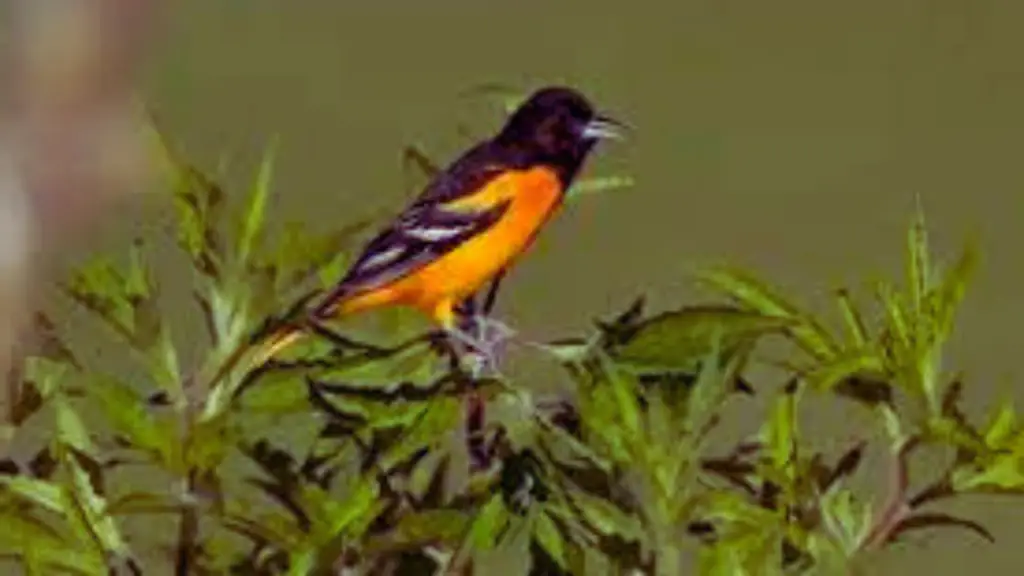
Immerse yourself in the world of oriole songs and discover how their unique melodies contribute to the conservation of their habitats. Studies show that preserving these habitats can increase oriole populations by up to 50%.
Orioles have a wide range of songs, each with its own purpose. They use songs to communicate with other orioles, establish territories, and attract mates. These beautiful melodies can be heard echoing through the forests and woodlands where orioles reside.
Oriole songs play a crucial role in habitat conservation. By studying these songs, researchers can gain valuable insights into the health and quality of oriole habitats. They can identify areas that need protection and restoration, ensuring the survival of these vibrant songbirds.
Preserving oriole habitats not only benefits the orioles themselves but also contributes to the overall biodiversity and ecological balance of the ecosystems they inhabit.
Conservation efforts focus on protecting and restoring the specific habitats that orioles rely on, such as forests with diverse tree species and open woodlands with ample nesting sites. By preserving these habitats, we can provide orioles with the resources they need to thrive and reproduce successfully. As a result, their populations can increase significantly, bringing more joy and beauty to our natural surroundings.
So, next time you hear the melodious sounds of an oriole, take a moment to appreciate the role these songs play in habitat conservation. By supporting efforts to protect and restore their habitats, you can contribute to the preservation of these magnificent birds and the ecosystems they call home.
Appreciating Orioles’ Songs in the Wild
If you love birdwatching, you’ll love learning how to identify oriole songs in the wild. Their melodies are a joy to listen to, and being able to recognize their unique calls will enhance your birdwatching experience.
Additionally, creating a bird-friendly garden is a great way to attract orioles and other songbirds to your backyard, providing them with a safe and welcoming habitat.
Birdwatching and Song Identification
Indulge in the melodic symphony of birdwatching as you identify the enchanting songs of orioles. To fully immerse yourself in this captivating experience, follow these steps:
- Find a peaceful spot: Seek out a quiet area where you can listen carefully to the sounds of nature without distractions.
- Tune in to the surroundings: Take a moment to absorb the ambient sounds and let the orioles’ songs stand out.
- Be patient: Sometimes, orioles may take a while to reveal themselves. Stay still and attentive, allowing their melodies to guide you.
- Listen for unique patterns: Orioles have distinct song patterns that can help you identify their presence. Pay attention to the rising and falling notes, trills, and melodic phrases.
With these tips in mind, you’ll be able to fully appreciate the beauty of orioles’ songs and add a touch of magic to your birdwatching adventures.
Tips for Creating Bird-Friendly Gardens
If you want to attract beautiful songbirds like orioles to your garden, creating a bird-friendly environment is essential. Not only will you get to enjoy their melodious tunes, but you’ll also be providing them with a safe haven. Here are a few tips to help you create a garden that will entice these vibrant creatures:
- Plant native trees and shrubs: Orioles are attracted to native plants that provide them with food and shelter. In the table below, you’ll find some examples of plants that will make your garden a haven for these feathered friends.
| Trees | Shrubs |
|---|---|
| Oak | Serviceberry |
| Maple | Elderberry |
| Dogwood | Viburnum |
- Provide nesting materials: Orioles are skilled nest builders. By offering materials like string, yarn, and twigs, you’ll make it easier for them to construct their intricate hanging nests.
- Offer a water source: Orioles love to bathe and drink water. Consider installing a birdbath or a shallow pond to meet their hydration needs.
By following these tips, you’ll create a bird-friendly oasis that will attract the enchanting sounds of orioles to your garden. So grab a chair, sit back, and immerse yourself in the serenade of these vibrant songbirds.
Captivating Recordings of Oriole Songs
Listen to these captivating recordings of oriole songs, and let their vibrant melodies transport you to a world of natural beauty. Close your eyes and imagine yourself in a peaceful garden, surrounded by lush greenery and colorful flowers. As you sit back and relax, the sweet and melodious tunes of the orioles fill the air, creating a symphony of sounds that is both enchanting and soothing.
In these recordings, you can hear the distinctive songs of different oriole species. The Baltimore oriole, with its rich and flute-like notes, serenades you with a melody that is both elegant and uplifting. Its clear and resonant voice can brighten up even the dullest of days. The orchard oriole, on the other hand, sings with a more playful and cheerful tone, as if inviting you to join in its joyful chorus.
As you listen to these recordings, you will notice the incredible range and versatility of the oriole’s songs. From cascading trills to bubbling whistles, each note is carefully crafted to convey a specific emotion or message. It is truly a testament to the remarkable vocal abilities of these remarkable songbirds.
So take a moment, sit back, and immerse yourself in the captivating world of oriole songs. Let their melodies transport you to a place of tranquility and wonder. And as you listen, remember to appreciate the beauty of nature and the incredible music it has to offer.
Conclusion: The Joy of Oriole Serenades
Immerse yourself in the enchanting world of oriole songs and let their vibrant melodies transport you to a place of pure joy and wonder.
The conclusion of this journey brings with it a sense of fulfillment, as you realize the true beauty and magic that the serenades of these magnificent songbirds hold.
The oriole’s songs are a source of endless delight. Their melodious tunes, filled with rich and varied notes, create a symphony that is both soothing and invigorating.
As you listen to their serenades, you can’t help but feel a sense of calm wash over you, as if all the worries of the world have momentarily faded away.
In the world of oriole serenades, there is no room for stress or negativity. Their songs are a reminder of the pure joy that can be found in nature’s simple pleasures.
The vibrant melodies uplift your spirit, filling you with a renewed sense of wonder and appreciation for the world around you.
So, take a moment to revel in the beauty of oriole serenades. Close your eyes and let their melodies envelop you, transporting you to a place where the worries of the world cease to exist.
Allow yourself to be carried away by the enchanting sounds and embrace the joy that these vibrant songbirds bring.
The world of oriole serenades awaits you.
Sounds of an Oriole: Frequently Asked Questions
How can I attract orioles to my backyard?
Attract orioles to your backyard by providing a variety of their favorite foods, such as oranges, jelly, and nectar feeders. Plant native trees and shrubs for shelter and nesting, and keep the area quiet and peaceful.
What is the lifespan of an oriole?
The lifespan of an oriole is typically around 8-10 years. By providing a suitable habitat, food sources, and avoiding hazards like predators and diseases, you can help increase their chances of living a long and healthy life.
Do all orioles sing the same songs?
Yes, all orioles sing different songs. But don’t let that discourage you! Each song is a unique masterpiece, a symphony of nature that will fill your heart with joy and awe.
Can oriole songs be used to identify different species?
Yes, oriole songs can be used to identify different species. Each species has its own unique song, allowing birdwatchers to distinguish between them based on their distinct melodies and patterns.
Are orioles known for their complex vocalizations?
Orioles are renowned for their complex vocalizations. Their songs are like a symphony, with each note harmonizing perfectly. Listen closely and let the melodious tunes of these vibrant songbirds captivate your senses.
Conclusion
Revel in the resplendent melodies of orioles, those vibrant songbirds that serenade the soul.
Their songs, a symphony of sweet sounds, are a testament to the importance of these avian musicians.
Through scientific exploration, we uncover the patterns and dialects of their remarkable tunes.
By appreciating their songs in the wild, we come to understand the vital role orioles play in habitat conservation.
So, immerse yourself in the captivating recordings of these marvelous melodies and experience the joy of oriole serenades.

